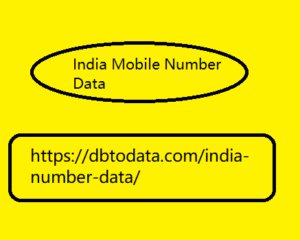Post by account_disabled on Mar 11, 2024 5:35:59 GMT
Nowadays everyone talks about Web 2.0, often inappropriately or without having studied the phenomenon in depth. For this reason I recommend reading the new essay Web 2.0 – Principles and Best Practices written by John Musser, Tim O'Reilly and the O'Reilly Radar team , that is, by those who first theorized the phenomenon. Web 2.0 is a collection of social, economic and technological trends that collectively form the foundation of the next generation of the Internet, a more mature and distinctive medium characterized by user participation, openness and network effects There are 8 "core patterns" that define Web 2.0: Harnessing Collective Intelligence : creating a participation architecture that, by leveraging "network effects" and particular algorithms, makes it easy for users to "add value" to the software with their own contributions. Ex: Flickr, Amazon, Google DATA is the next “Intel Inside” : data is the distinctive element of web 2.0 so whoever manages to forge a peculiar database that is difficult to reconstruct by competitors wins.
Having an information strategy becomes more important than having India Mobile Number Data a product strategy. For example: the eBay auction database Innovation in Assembly : having a platform strategy in web 2.0 means designing services that can be easily re-mixed by anyone, and thanks to the release of the API (Application Programming Interface). Whoever manages to create an ecosystem of partners capable of benefiting from the new mash-ups wins. Ex: 40% of Salesforce.com E-CRM transactions come from its external APIs. Rich User Experience : from the static page to the creation of Rich Internet Applications capable of recreating the desktop experience by combining it with the peculiarities of the web.

To do this, new languages and technologies are born: AJAX, Silverlight, Apollo, JavaFX, Software above the level of a single device : designing applications capable of adapting their behavior to the medium of use, allowing the user to have a satisfactory experience both on PC and on any mobile device. Ex: Dodgeball Perpetual Beta : Web 2.0 services have a development cycle that heavily involves its users during long periods of beta testing. To listen to their feedback it is necessary to structure A/B testing models which consist of presenting future functionalities of the service to different groups of users in order to test their reaction (through "shadow applications"). Ex: Amazon does this every day.
Having an information strategy becomes more important than having India Mobile Number Data a product strategy. For example: the eBay auction database Innovation in Assembly : having a platform strategy in web 2.0 means designing services that can be easily re-mixed by anyone, and thanks to the release of the API (Application Programming Interface). Whoever manages to create an ecosystem of partners capable of benefiting from the new mash-ups wins. Ex: 40% of Salesforce.com E-CRM transactions come from its external APIs. Rich User Experience : from the static page to the creation of Rich Internet Applications capable of recreating the desktop experience by combining it with the peculiarities of the web.

To do this, new languages and technologies are born: AJAX, Silverlight, Apollo, JavaFX, Software above the level of a single device : designing applications capable of adapting their behavior to the medium of use, allowing the user to have a satisfactory experience both on PC and on any mobile device. Ex: Dodgeball Perpetual Beta : Web 2.0 services have a development cycle that heavily involves its users during long periods of beta testing. To listen to their feedback it is necessary to structure A/B testing models which consist of presenting future functionalities of the service to different groups of users in order to test their reaction (through "shadow applications"). Ex: Amazon does this every day.
